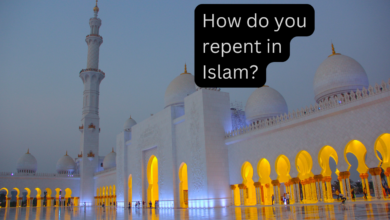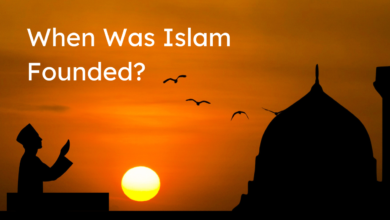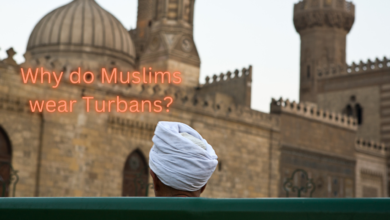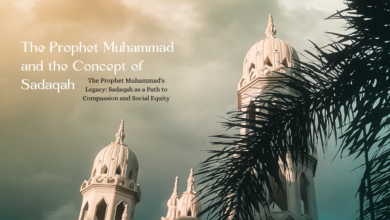Who was the Leader of Islam?
"Unveiling the Legacy: The Leadership of Islam Through History"
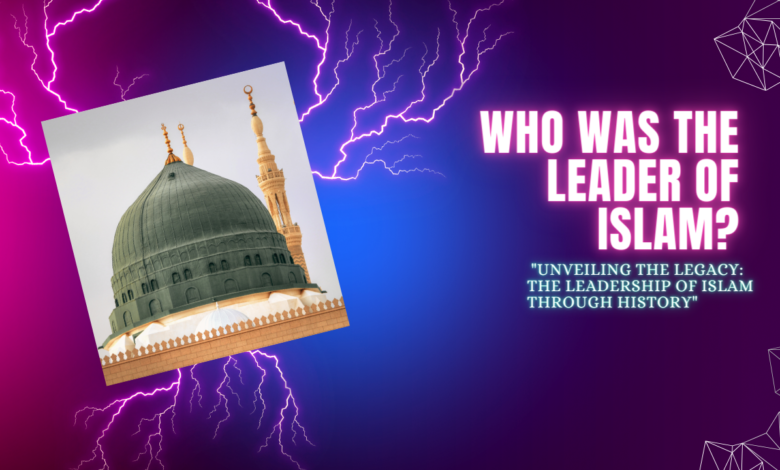
Who was the Leader of Islam?
The founder and leader of Islam is Prophet Muhammad (peace be upon him). He is considered the final prophet in Islam and played a central role in spreading the religion.

Introduction
Islam, one of the world’s major religions, boasts a rich history that spans over 1,400 years. Central to the faith is the leadership of the Muslim community, often referred to as the Ummah. Understanding the role of leadership in Islam is essential to grasp the religion’s development and its influence on the global stage. While there is no single universally recognized leader of Islam, this article explores the historical leaders and key figures who have shaped the faith.
Prophet Muhammad (570-632 CE) – The Final Prophet
The foundation of Islam rests upon the teachings of the Prophet Muhammad, who Muslims believe to be the last and final prophet sent by God (Allah). Born in Mecca in 570 CE, Muhammad received revelations from Allah over a period of 23 years, which were later compiled into the Quran, the holy book of Islam. Muhammad’s leadership was multifaceted, encompassing spiritual, moral, and political aspects. He established the first Islamic state in Medina, laying the groundwork for the religious and political structure of the Ummah. His leadership is regarded as a model of humility, justice, and compassion.
Also Check
- Fragrance of the beloved Prophet Muhammad (PUBH)
- What is Ummah in Islam?
- Rights of a Muslim Wife upon Her Husband
- Charity As Taught By Quran And Prophet Muhammad (PBUH)
- Islamic quotes
Caliphs (632-661 CE) – Successors to the Prophet
Following the death of Prophet Muhammad in 632 CE, the early Muslim community faced a leadership transition. Four Caliphs, also known as Rashidun Caliphs, succeeded Muhammad:
- Abu Bakr (632-634 CE) – The first Caliph and a close companion of the Prophet, Abu Bakr is revered for his leadership during the Ridda Wars and his role in the compilation of the Quran.
- Umar ibn al-Khattab (634-644 CE) – The second Caliph, Umar expanded the Islamic empire significantly during his reign, making it one of the world’s largest empires at the time.
- Uthman ibn Affan (644-656 CE) – The third Caliph, Uthman is known for standardizing the Quranic text and overseeing its distribution to various regions.
- Ali ibn Abi Talib (656-661 CE) – The fourth Caliph, Ali, is a central figure in Islamic history and is highly regarded by the Shia branch of Islam. His leadership was marked by internal conflicts and the First Fitna, a civil war within the Muslim community.
The Umayyad and Abbasid Caliphates (661-1258 CE) – Political and Religious Authority
After the Rashidun Caliphs, the Islamic community witnessed the rise of various dynasties, each with its own Caliph. The Umayyad Caliphate (661-750 CE) was the first major Islamic dynasty, followed by the Abbasid Caliphate (750-1258 CE). These Caliphs were both political and religious leaders, ruling over vast territories and promoting Islamic culture, science, and scholarship.
Contemporary Islamic Leadership – Diverse Perspectives
In contemporary times, the concept of a single leader of Islam is less prevalent. Today, the Muslim world consists of diverse sects, each with its own interpretation of leadership and religious authority. For Sunni Muslims, the Caliphate largely ended with the fall of the Ottoman Empire in 1924, and they look to religious scholars and leaders for guidance. Shia Muslims, on the other hand, recognize the leadership of Imams and Ayatollahs, with different branches such as Twelvers, Ismailis, and Zaidis.
Conclusion
Islam’s leadership structure has evolved over centuries, from the leadership of the Prophet Muhammad and the Rashidun Caliphs to the various dynasties and sects within the Muslim world today. While there is no single leader of Islam in the contemporary sense, the religion remains a powerful force with diverse interpretations and authorities. Understanding the historical leaders and their contributions is crucial for comprehending the complexity of Islamic leadership and its enduring impact on the global stage.

FAQS- About Who was the Leader of Islam?
Who was the founder and leader of Islam?
The founder and leader of Islam is Prophet Muhammad (peace be upon him). He is considered the final prophet in Islam and played a central role in spreading the religion.
What title is given to the leader of Islam?
The leader of Islam is often referred to as the “Prophet” or “Messenger of Allah.” Prophet Muhammad is the most significant and final prophet in Islam.
Are there any other leaders in Islam besides Prophet Muhammad?
In Sunni Islam, Prophet Muhammad is regarded as the last and final prophet. However, in Shia Islam, there is a belief in a line of Imams who are considered spiritual and religious leaders, with Ali ibn Abi Talib being the first Imam.
How did Prophet Muhammad become the leader of Islam?
Prophet Muhammad received his first revelation from Allah (God) through the angel Gabriel when he was 40 years old. Over the next 23 years, he continued to receive revelations, which were eventually compiled into the Quran. Through his teachings and leadership, he united the Arab tribes of the Arabian Peninsula and established Islam as a major religion.
What role did Prophet Muhammad play in the early development of Islam?
Prophet Muhammad played a central role in spreading the message of Islam, both as a religious leader and a political leader in Medina. He led the early Muslim community, known as the ummah, and his teachings and actions continue to be a fundamental source of guidance for Muslims worldwide.
How long did Prophet Muhammad lead the Muslim community?
Prophet Muhammad led the Muslim community from the age of 40 until his passing at the age of 63. His leadership is often divided into two phases: the Meccan period, during which he preached in the city of Mecca, and the Medinan period, during which he established a Muslim state in Medina.
What is the significance of Prophet Muhammad’s leadership in Islam?
Prophet Muhammad’s leadership is of utmost significance in Islam. He is considered the “Seal of the Prophets,” meaning the final prophet sent by Allah to guide humanity. His leadership established the foundations of Islamic theology, law, and ethics, making him a revered figure in the Muslim world.
What is the role of leadership in Islam after Prophet Muhammad?
After Prophet Muhammad’s death, leadership in the Muslim community (umma) took various forms. The division between Sunni and Shia Islam is rooted in differing views on who should lead the Muslim community after the Prophet. Sunni Muslims follow the consensus of the community (caliphs), while Shia Muslims believe in the leadership of the Imams, starting with Ali.
How is leadership in Islam understood in modern times?
In modern times, leadership in Islam varies widely. Muslim-majority countries may have different forms of government, and religious scholars and clerics often play influential roles in interpreting Islamic law and guiding the community. The understanding of leadership in Islam can differ among Muslims based on cultural, historical, and geographical factors.
Is there a single leader of all Muslims today?
No, there is no single universally recognized leader for all Muslims today. The Muslim world consists of various countries and communities, each with its own leadership structures and authorities. While spiritual leadership is often vested in religious scholars and clerics, there is no central religious authority that governs all Muslims globally.
